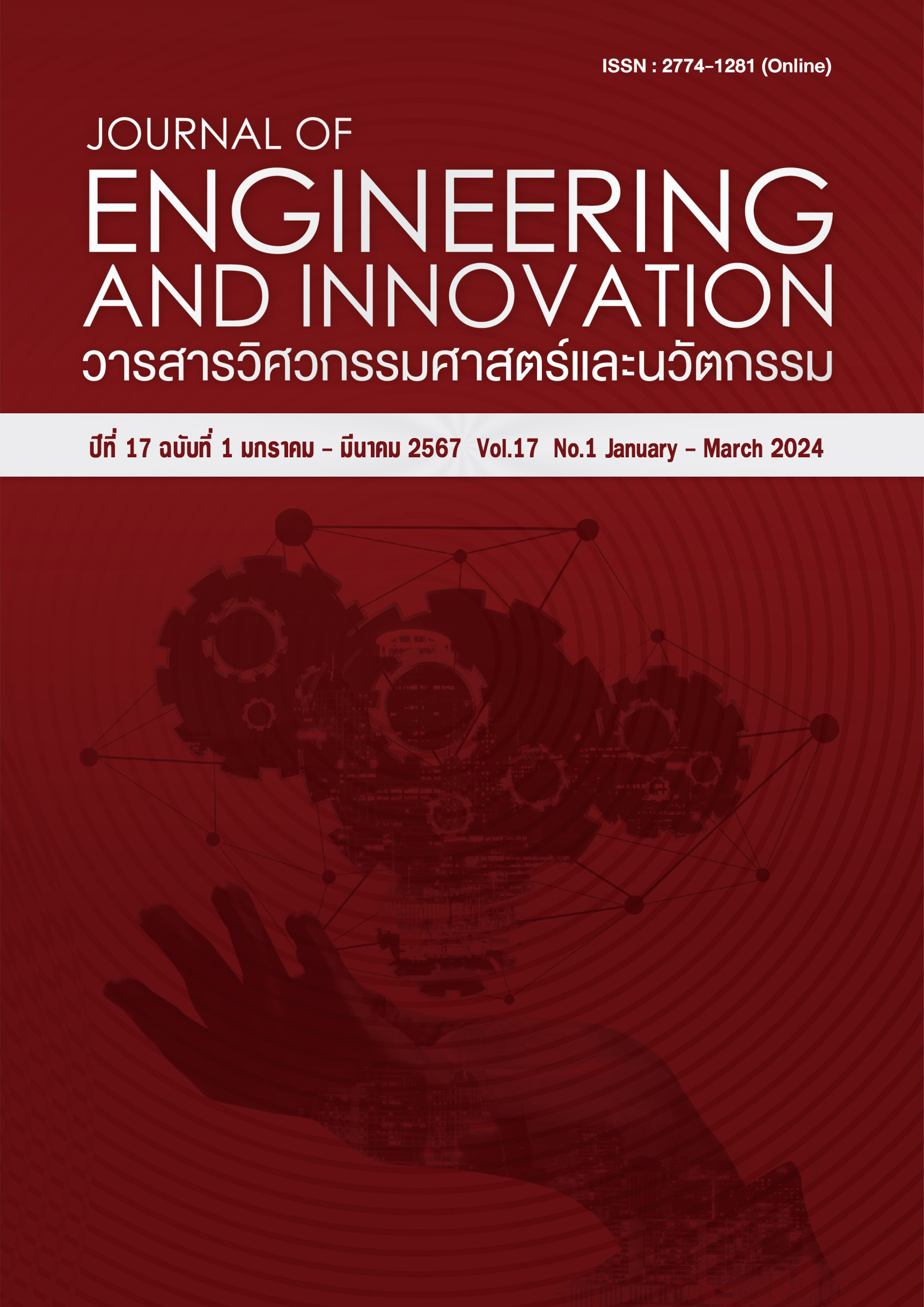Improvement of color formulations in industrial printing by mixture design of experiments
Main Article Content
Abstract
Printing on packages as per customer need in the case study revealed the problems at the stage of prototype inspection before production. The error was caused by the printing department, of which the printing plate system took too many materials and color production ingredients as not necessary. This resulted in high production cost. Also, there was neither data recording nor color adjustment to be in accordance with the company standard. Thus, this research aimed to improve color formations in industrial printing by mixture design. The factors to be studied were 2 new color formulations, i.e., Formulation 1: Pink, which included 9 ingredients; and Formulation 2: Purple, which included 3 ingredients. The experiment of each particular formulation was implemented as the amounts of ingredients for 3 formulations. Then, the results were analyzed by one-way ANOVA, with the significance level of 0.05. The ingredients of the 3 formulations were considered. It was found that the reduction of ingredients did not affect tone change. More specifically, the results of improvement revealed that the total amount of Formulation 1: Pink was 69.60 kg, which could reduce to 48.60 kg; with the cost reducing to 7,346 baht (42.30%). The total amount of Formulation 2: Purple was 29 kg, which could reduce to 17 kg; with the cost reducing to 3,498 (39.13%). Besides, the values obtained from these improved color formulations could be recorded as the standard values of the company for package printing in the future.
Article Details
References
ไกรพ เจริญโสภา และวีระ โชติธรรมาภรณ์. รายงานการวิจัยเรื่องสถานการณ์ปัญหาผู้ประกอบธุรกิจการพิมพ์ในจังหวัดสมุทรสงคราม. มหาวิทยาลัยราชภัฏสวนสุนันทา:กรุงเทพ; 2554
Creswell, J. W. A concise Introduction to Mixed method Research. Los Angeles: Sage; 2015.
Mongomery, DC., Design and Analysis of Experiments, 6th ed. John Wiley&Son Inc., New York, 2000.
Choomrit N. Engineering statistics. Bangkok: Se-education; 2013.
Buruk Sahin, Yeliz, Ezgi Aktar Demirtaş, and Nimetullah Burnak. "Mixture design: A review of recent applications in the food industry. 2016. 297-304.
ปิยะนุช รสเครือ และมะลิวรรณ์ กิจชัยเจริญ. การพัฒนาสูตรที่เหมาะสมต่อผลิตภัณฑ์มะไฟจีนแผ่น. วารสารบัณฑิตศึกษา. ปีที่ 14 ฉบับที่ 1. มหาวิทยาลัยราชภัฏวไลยอลงกรณ์ในพระบรมราชูปถัมภ์. กรุงเทพ;2563. หน้า 235-256
Myers, R.H. and D.C. Montgomery., Response Surface Methodology Process and Product Optimization Using Designed Experiments. 2nd ed. John Wiley and Son, Inc., New York. 2002.
SOUZA, Grazielle PR, et al. Enzymatic Hydrolysis of Waste Cooking Oil by Lipase Catalysis: Simplex Mixture Design Optimization. Catalysis Letters, 2023, 153.3: 689-697.
สมศักดิ์ แก้วพลอย. การพัฒนาสูตรที่เหมาะสมสำหรับลูกชิ้นเอ็นไก่ผสมผักพื้นบ้านโดยวิธีการออกแบบการทดลอง. การประชุมวิชาการการพัฒนาชนบทที่ยั่งยืน ครั้งที่ 4. นครราชสีมา; 2557. หน้า 357-363
ฉัตรมณี สนนุช และธนธร ทองสัมฤทธิ์. การพัฒนาหมึกสีขาวฐานตัวทำละลายโดยการประยุกต์ใช้การออกแบบการทดลองแบบผสม. การประชุมนำเสนอผลงานวิจัยระดับบัณฑิตศึกษา ครั้งที่ 15 ปี. มหาวิทยาลัยรังสิต. กรุงเทพ;2563. หน้า 2285 - 2292

